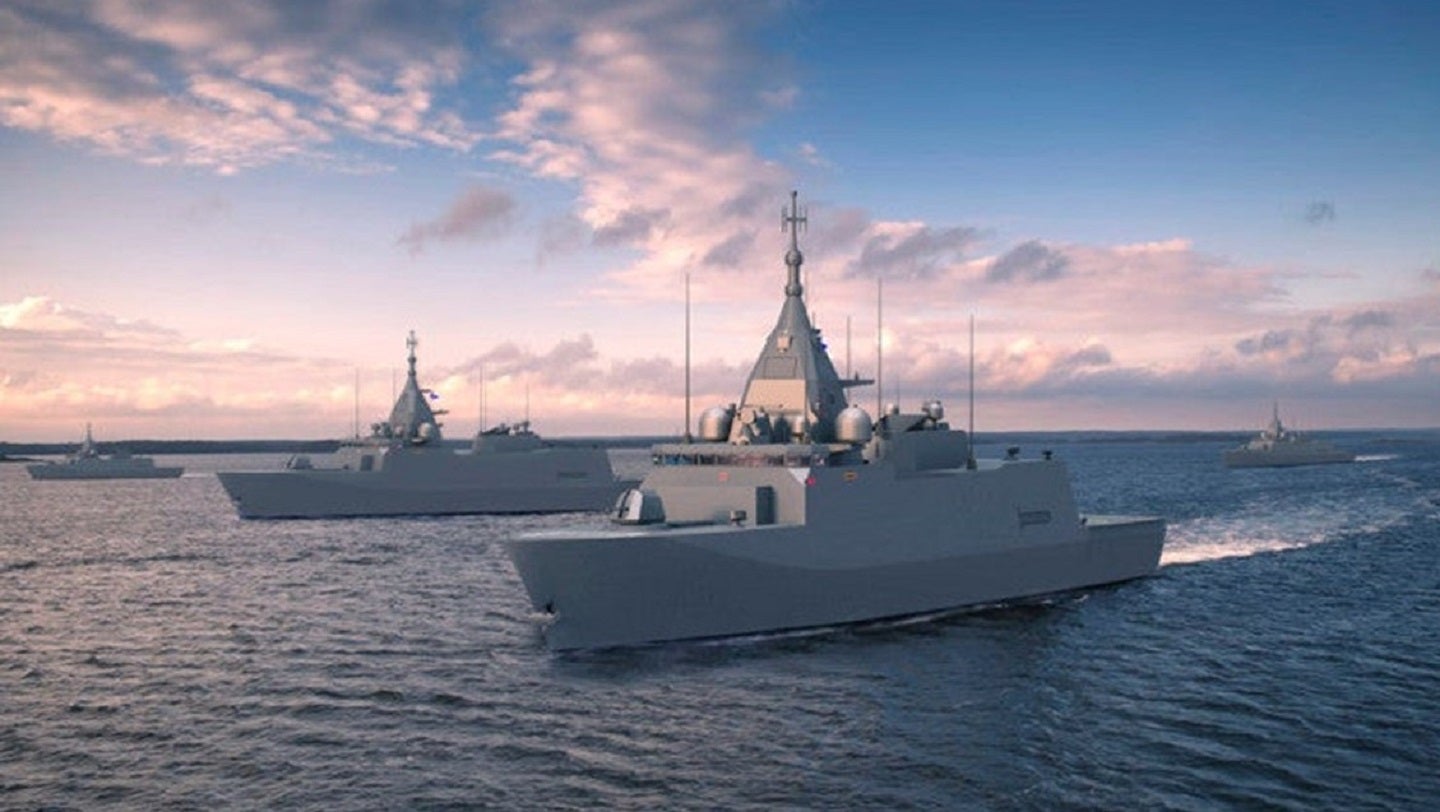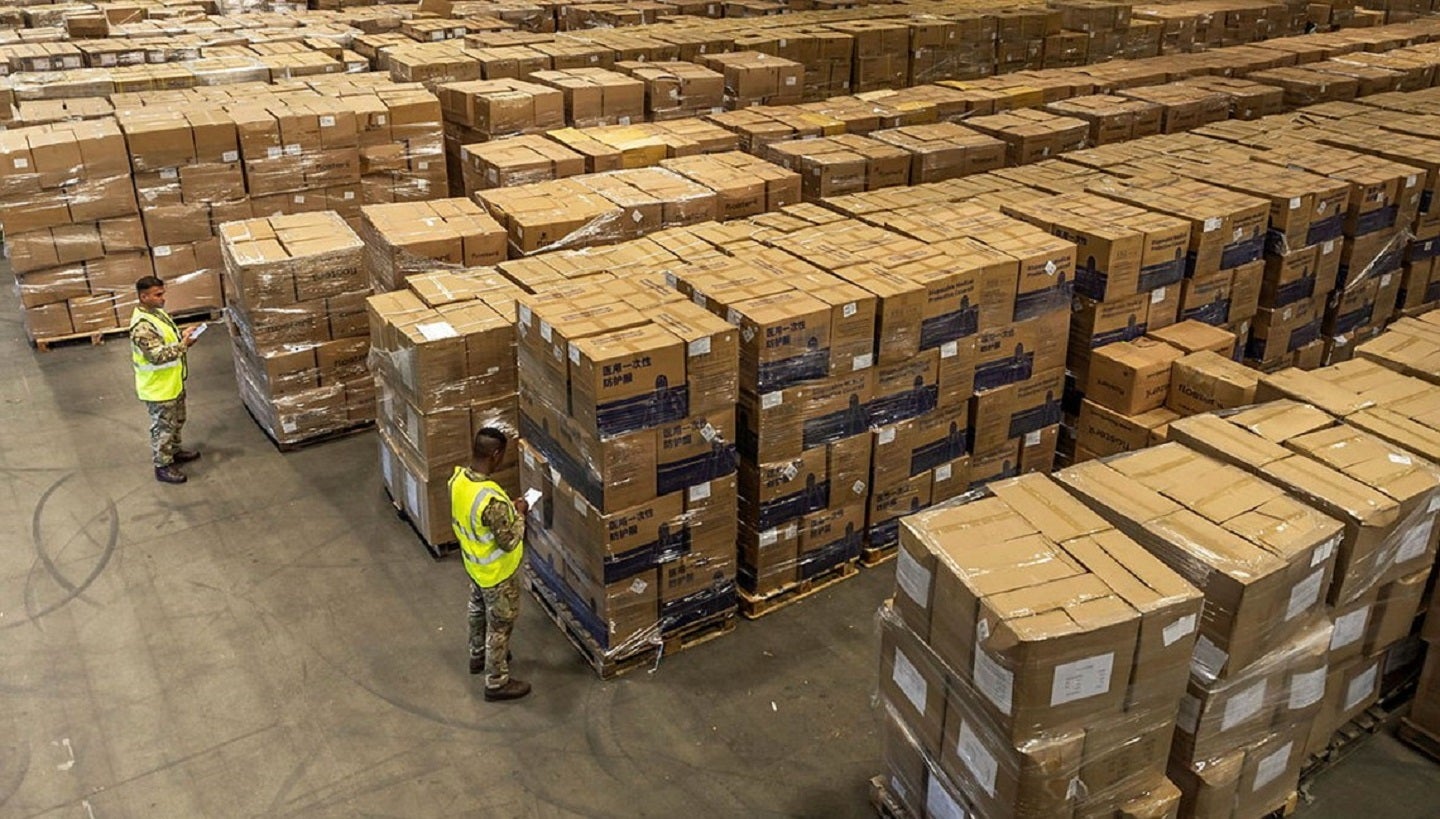
Aerospace, Defence & Security DECODED
Previous edition: 24 Apr 2024
Share article
Get the full version straight to your inbox.
Exclusive access to our best-in-class data & intelligence
Subscribe now
Analysis: UK defence spend hike will have to plug MoD's fiscal black hole
More than 22% of UK’s defence spending hike through to 2030 will go in covering shortfalls in existing programmes.

Nearly one-quarter of the newly announced increase in UK defence spending will be required to properly finance existing military procurement programmes, with the UK’s National Audit Office (NAO) stating in December 2023 that forecast costs exceeded the then budget by £16.9bn ($21.5bn).
UK Prime Minister Rishi Sunak stated on 23 April during a visit to Poland that UK defence spending will increase to 2.5% of GDP by 2030 to reach £87bn, which followed a pledge by opposition leader Keir Starmer earlier in April. Current UK defence spending is around 2.3% of GDP.
The political commitments come amid a shifting European security landscape following Russia’s invasion of Ukraine in 2022, with the war showing no signs of ending after 26 months of intense fighting.
The UK Government’s pledge will see defence spending “steadily increase” to 2.5% of GDP by the end of the decade, reaching £87bn by 2030. Through this metric, defence would receive an additional £75bn over six years or £12.5bn per year, maintaining the UK’s lead as the largest European defence spender.
Given this, 22.5% of the planned increase in defence spending through to 2030 would have to be used to properly finance UK defence programmes.
Delivering a speech alongside Nato Secretary-General Jens Stoltenberg in Poland on 23 April, Sunak said the UK was at a “turning point” in European security, adding that an “axis of autocratic states”, namely Russia, Iran, and China, were seeking to reshape the world order.
In his announcement, Sunak revealed that at least £10bn would be invested over the next decade in munitions production as the UK seeks to replenish stock depleted from donations to Ukraine, turning the country’s industry onto a “war footing”.
A second commitment would be to “modernise” the UK military through the creation of a new Defence Innovation Agency and pledging 5% of the defence budget to research and development programmes.
Finally, Sunak said the UK would spend an additional £500m in 2024 on ammunition, air defence, and drones for Ukraine to aid Kyiv in its fight against Russia, described as the “largest-ever single delivery of military equipment to Ukraine’s frontlines”.
The increase in defence spending would begin “immediately” and “rise linearly”, with an overall increase of £3bn in the next financial year.
The commitment to munitions funding would see the award of multi-year contracts to industry, as well as “continued investment” in UK-built 155mm artillery ammunition. Artillery has proven to be of critical importance even in modern warfare, with the Ukraine-Russia war showcasing the key role that such a capability plays on the battlefield.
UK defence spending increase: do the numbers add up?
At the end of 2023, the UK NAO published its analysis of the Ministry of Defence’s (MoD) Equipment Plan 2023-2033, a document that detailed all major procurement plans over the coming decade.
According to the NAO, the Equipment Plan 2023-2033 exceeded the then budget by £16.9bn, with costs estimated at the end of March 2023 of £305.5bn compared to a budget of £288.6bn. This figure represented a deterioration compared with the previous year’s Plan, for 2022 to 2032, in which the forecast costs were just £2.6bn less than the available budget.
The November 2023 NAO report said that the MoD’s 2023-2033 Plan was unaffordable “because forecast costs have risen by £65.7bn (27%) compared with the previous Plan, outstripping a budget increase of £46.3bn (19%)”.
The UK has committed to large defence modernisation efforts across the domains, such as the Ajax armoured fighting vehicle, Challenger 3 main battle tanks (MBT), Mobile Fires Platform artillery, and Boxer armoured vehicle on land, continued procurement of F-35B stealth fighters in the air domain, and acquisition of new frigates for the Royal Navy.
In 2023, the UK announced that it would cut its planned purchase of five E-7 airborne early warning aircraft to just three airframes, which followed earlier reductions in the number of advanced Type 26 frigates from 13 ships to just eight, with the numbers made up through the acquisition of five smaller warships, which became the Type 31 class.
Additionally, just 148 of 227 Challenger 2 MBTs will be upgraded to the Challenger 3 standard while the UK will retire 26 of its 30 remaining Tranche 1 Eurofighter Typhoons in 2025 without replacement.
What will the Defence Innovation Agency do?
The UK Government stated that the newly created Defence Innovation Agency (DIA) was to manage scaled-up investment in R&D, bringing together the “fragmented defence innovation landscape” into a single organisation.
This includes R&D in new weapons systems such as directed energy weapons or hypersonic missiles, as well as space capabilities and other emerging technologies, the UK Government said. Among the first programmes the new DIA is to be tasked with overseeing appears to be the integration of the DragonFire laser weapons system into Royal Navy warships by 2027.
With this, existing MoD departments – such as the Defence and Security Accelerator (DASA) or the Defence Innovation Unit – tasked with operating in the defence innovation space appear to have been dissolved or else brought under the umbrella of the DIA structure.
In 2019, the UK MoD appointed a Director Defence Innovation, tasked with “enabling and embedding innovation across Defence”.
At the time, the new Director Defence Innovation, Clare Cameron, said: “The job is fundamentally a Business Change role; changing current cultural behaviours across the MoD and enabling everyone to engage in innovation and to be open to great ideas and to follow through on them.”
In 2022, Cameron joined Ploughshare, a company wholly owned by the Defence Science and Technology Laboratory, which has access to a wide range of technologies developed by leading scientists and engineers at the Ministry of Defence and wider government, the UK Government announced at the time.
The UK MoD, through DASA, provides small and medium enterprises active in the defence sector with Defence Innovation Loans of up to £2m, a “below-market interest rate” of 7.4% per annum to “help convert your mature defence innovation into a strong business proposition for defence procurement”, according to official data.
Latest news

In data: Latvia's defence budget set for 70% growth by 2028
Latvia will spend more on its military in the years ahead as the defence budget continues to increase following Russia's invasion of Ukraine.

Rauma lays keel for first Finnish Squadron 2020 corvette
Due to national security reasons, Finland’s new corvettes are being built indoors.

Q&A: Ivalua discusses supply chain visibility in defence
Ivalua product director Stephen Carter, talks about how defence can overcome risk in supply chains.
In our previous edition

Aerospace, Defence & Security Decoded
In data: land military radar market share overtaken by air segment
23 Apr 2024

Aerospace, Defence & Security Decoded
In data: Bahrain's balancing act amidst US dominance
22 Apr 2024

Aerospace, Defence & Security Decoded
In data: Egypt looks to secure jets and missile defence
19 Apr 2024
Newsletters in other sectors
Aerospace, Defence & Security
Automotive
Travel and Tourism
Search companies, themes, reports, as well as actionable data & insights spanning 22 global industries
Access more premium companies when you subscribe to Explorer


